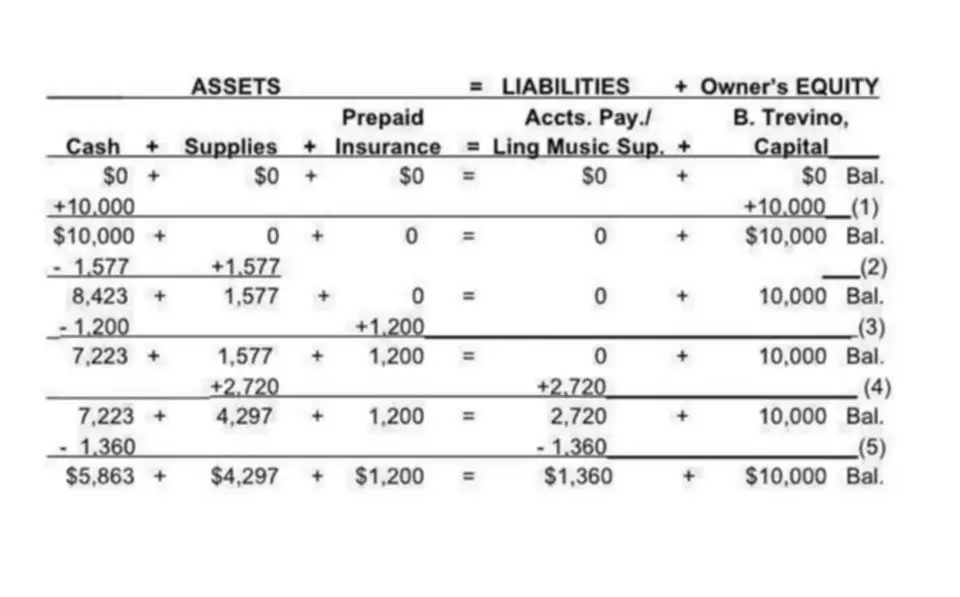Content

Expenses are temporary accounts that illustrate a company’s cost of conducting business. Expenses include items such as supplies, advertising and other costs your company must pay to generate revenue. Debit the income summary account for the total expenses for the period. This closes expenses for the period, which creates a zero balance in your company’s expense accounts. For instance, if your company has $5,000 total expenses, debit the income summary for $5,000. This transfers the total expenses for the period to your company’s income summary account.
Mục lục
Is Cash a Temporary Account?
Cash is not a temporary account. Because this account is permanent, it does not close at the conclusion of a period.
For example, the balance of the Income Summary after the revenues and expenses are closed, is a debit amount of $36,000. Temporary accounts are closed at the end of each accounting period. These are the accounts in which the transaction of all expenses made by the company’s business are recorded. Permanent accounts are defined as accounts that remain open accounts throughout a business period.
Recording a Closing Entry
At the end of a fiscal year, the accountants note the balance, but they do not close the account by zeroing it out. For example, the inventory balance from one year-end becomes the following year’s inventory balance. By crediting the amount in the latter, the capital account, along with the current and financial accounts, makes up the country’s balance of payments.
There is no set fiscal time for keeping a temporary account, and it can last for a year or even a quarter. Quarterly temporary accounts are very common nowadays for tax payments and monitoring the financial success of the organization.
Company
Technically, this is not a temporary account as its account balance is not transferred to the income summary account. In general, permanent accounts https://simple-accounting.org/ are used to account for equity, liabilities, and assets . In most cases, permanent accounts are used to account for assets, liabilities, and equity.
- Revenue accounts – all revenue or income accounts are temporary accounts.
- The last closing entry reduces the amount retained by the amount paid out to investors.
- However, financial professionals also use temporary and permanent accounts to ensure they record financial transactions accurately.
- The balance of the temporary account is then transferred to a permanent account.
- When the next fiscal period starts, the new account begins at zero.
In sole proprietorships, they are closed to the owner’s capital account. In partnerships, they are distributed to the partners’ capital accounts using an appropriate allocation method. In corporations, they are closed to retained earnings or accumulated profits. Ultimately, after the closing process, temporary accounts are incorporated and become part of a “permanent” capital account. Temporary accounts are accounts that are designed to track financial activity for a specific period of time. In order to have accurate financial statements, you must close each temporary account at the end of the accounting period. Temporary accounts, as mentioned above, including revenues, expenses, dividends or accounts.
Differences between Temporary and Permanent Accounts
On the balance sheet, $75 of cash held today is still valued at $75 next year, even if it is not spent. At the conclusion of a fiscal year, accountants report the account’s final balance but do not zero it out. Due to this, the account’s closing balance is carried over from one fiscal year to the next. Now that you have a basic understanding of the two types of accounts, let’s move onto the next lesson on how to prepare closing entries.
- Post this, when the next fiscal period begins, the new account is again reset to zero.
- Assume a company has a $500 debit balance in its drawings account.
- They are housed on the balance sheet, a section of the financial statements that gives investors an indication of a company’s value, including its assets and liabilities.
- The best way for accountants to gauge a company’s profitability is to use temporary accounts.
- Once the relevant accounting period ends any balance in such accounts is transferred to income statement or statement of other incomes as the case may be.
- These accounts may be helpful for corporations since they facilitate monitoring progress toward goals.
- Most business owners are familiar with the core account types, such as revenue and expenses.
These accounts may be helpful for corporations since they facilitate monitoring progress toward goals. They are the polar opposite of temporary accounts as they are not reset to zero, the account balance is compounded each year. The reason for doing this is to be able to track the RED account balances for each year instead of the years cumulatively. At the end of the accounting cycle, the examples of temporary accounts balance of temporary accounts is transferred to a permanent account and reset to zero. At the end of an accounting period, any balance in these accounts is moved to the retained earnings account. This process of transferring the account balance is referred to as closing an account. One of the reason for closing down such accounts is not to mix up results of one period with another period.
